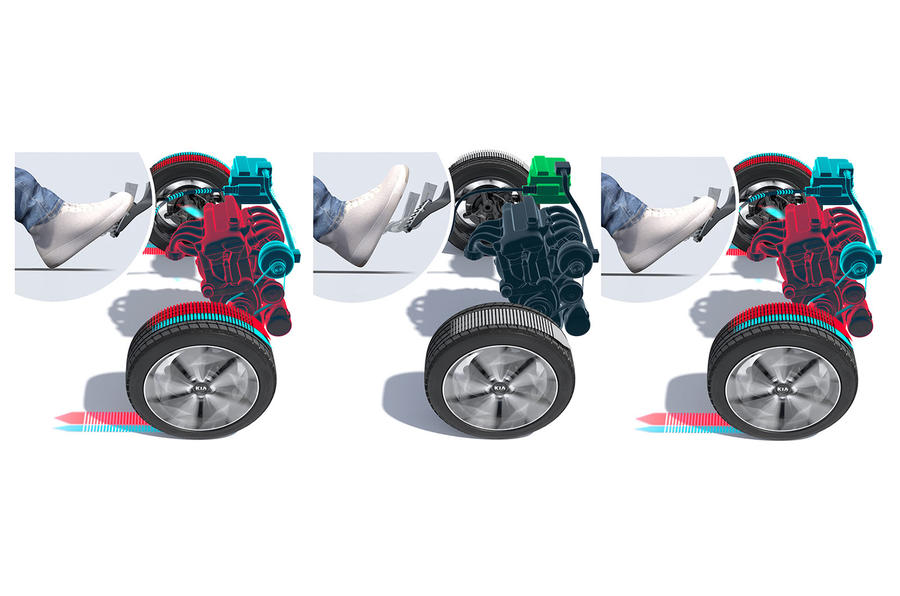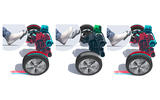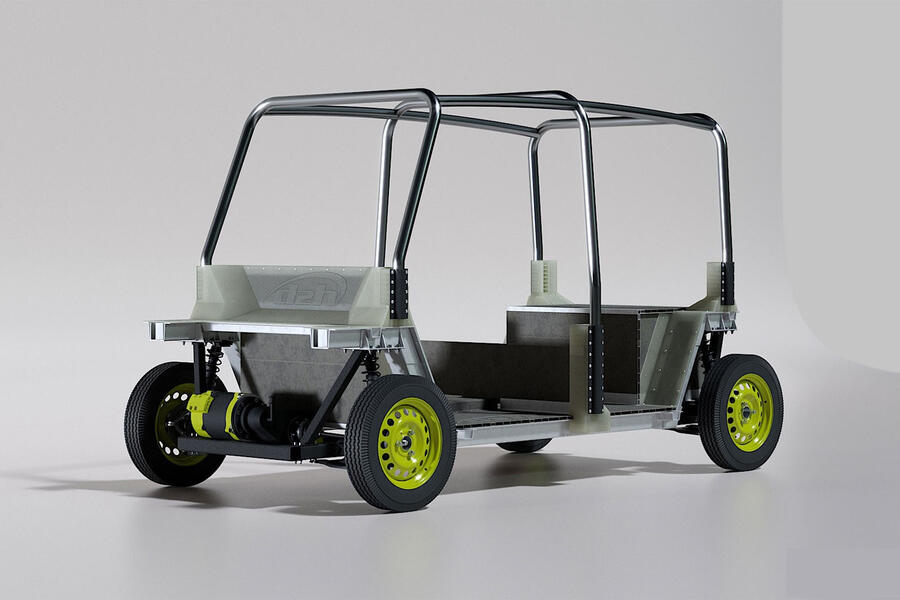Kia's Intelligent Manual Transmission (iMT), with its clutch-by-wire system, set the antennae twitching at Autocar Towers, because the crystal ball had been revealing only automatic and semi-automatic gearboxes as the solutions to staying on top of future emissions regulations. Clutch-by-wire is an electronically controlled, electrohydraulic clutch actuation system that’s specifically designed to work with 48V mild-hybrid powertrains.
One of the problems powertrain engineers have faced, ever since emissions became a thing, is the driver. No matter how skilled they are, drivers aren’t good at getting the best efficiency out of an engine and gearbox, and that’s why the ‘integrated powertrain’ approach evolved, with engines and automatic gearbox control systems linked so they can achieve the best economy.
That’s all very well for more expensive cars, but for smaller, cheaper cars, autos can be a pricey overhead. Clutch-by-wire bridges the gap, allowing a manual gearbox to gain an added economy feature, namely coasting with the engine shut down. So far, this has only been possible with autos.
Clutches are normally operated in one of two ways: hydraulically or mechanically by a cable. A hydraulic system usually consists of master and slave cylinders. The master is attached to the clutch pedal, while the slave cylinder physically disengages the clutch. With the clutch-by-wire system, the clutch pedal sends a signal to an electronic control unit and an electrohydraulic actuator (replacing the conventional master cylinder) generates the hydraulic pressure. A slave cylinder opening the clutch is conventional.
Arguably, Kia has missed a trick in not opting for a completely ‘dry’ electromechanical system with an electrically operated clutch mechanism and no hydraulics, but that said, the chosen route could make packaging far more practical, especially in small cars, where nothing really needs to change in the design of the engine and gearbox. When the driver comes off the accelerator, either when cruising below 77mph or to slow down for the lights or a junction, coasting can give a modest effi ciency gain (Kia claims a CO2 reduction of 3%) by switching off the engine completely. There’s no downhill coasting, though. When the driver brakes, the engine kicks back in to benefit from regenerative and engine braking.
During coasting, the system works as it would with an automatic gearbox: the clutch opens (but without the driver pressing the pedal), the engine shuts down and the car coasts with the car in gear. If the driver has a change of mind and presses the clutch pedal to select another gear, or gets back on the accelerator or brakes, the 48V starter-generator restarts the engine. In that case, the engine will resume drive with mild electrical assistance from the starter-generator if the car has slowed and the selected gear is a little too high. Once at a standstill at the lights, the system behaves much as it would with normal stop-start, restarting the engine when the driver presses the clutch or accelerator pedal.









Join the debate
Add your comment
Make it more useful
Kia are missing another trick; this gadget would be far more useful if it also enabled starting up from rest without using the clutch pedal; drivers would be able to edge forward in traffic queues without having to stamp up and down on the clutch pedal umpteen times. (This could be done on the old Citroen 2CV because it had a second automatic (centrifugal) clutch in line with the main one.) I'm sure this would obviate the need for a full automatic for many drivers.
Xxxx not a cost benefit
Xxxx. This is never about cost to the motorist but about trying to eek every last trick to lower CO2 to avoid the fines ! (And the fines are just stupid, you can sell a heavy 2 seater Ferrari that does 15mpg but not a Suzuki Jimny 4 seater that uses less fuel overall but is lighter but the weight to CO2 ratio is not as good!)
couplpe of points
So intelligent transmission is really just a electric clutch pedal and some software. On another note engine coasting (whilst in gear) barely uses any petrol and less than an idling engine whilst in neutral. Kindda need to know the additional cost before knowing what the savings will be, if any